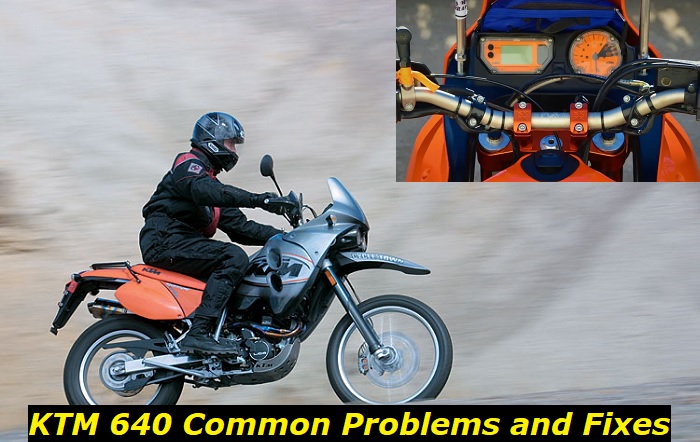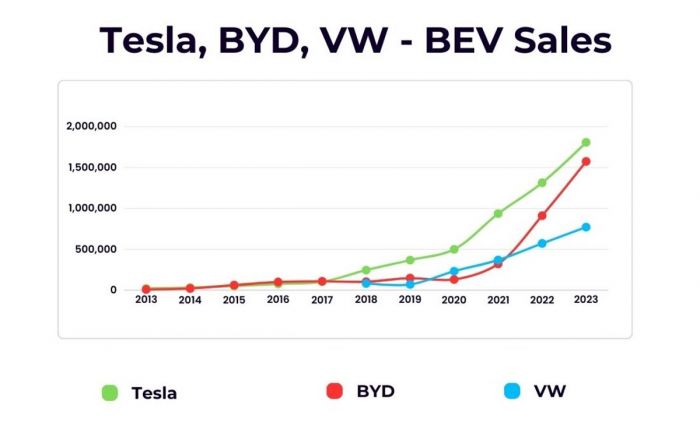The KTM 640 is one of the most popular Supermoto stalwarts from the Austrian sports car, bicycle, and motorcycle manufacturer KTM. This model was made by the multinational company from 1998 until 2007 but continues to be a popular item for motorcycle enthusiasts of today.
The KTM 640 is described as a rough bike that's great for commuters and for people who like to show off their stunt skills.

Is the KTM 640 a good motorcycle?
As a member of the famed LC4 family, the KTM 640 boasts of an electric start and a Kokusan DC-CDI. This bike comes with five gears and is equipped with a 620cc engine. The KTM 640 became very popular at the time of its release due to its tough look but less the scrappy and rugged performance. Commuters were attracted to the lightning speed and easy handles of the KTM 640. Hence, most owners keep it to this day.
The KTM 640 is part of the early years of the super-moto bikes KTM produced in the latter half of the 1990s. Most bikes during these years were ready for competition, which made the KTM 640 unique since this model performs well both on the road and in stunt and racing competitions. KTM discontinued the production of 640 models to give way to the 690 editions. However, the popularity of 640 bikes didn't wane even after over a decade.
Despite its popularity, the KTM 640 has its share of flaws and inconsistencies. These issues became KTM's basis to start manufacturing the 690 version. Most riders shared that the 640 and 690's difference in terms of performance is very glaring. Some say that the 690's engine was way smoother than the 640. Sentiments like these were cited as the main reasons why KTM stopped mass-producing the 640 models in 2007.
What are the most prominent problems with the bike?
Like most successful products, the KTM 640 saw a decline in patronage due to some issues and problems users encountered when using this bike. Listed below are some of the biggest and most prevalent issues with this motorbike. Solutions to these problems are also stated.
If you still have a KTM 640 parked in your yard that was never used for a long time, read on to know what you can do to bring this classic bike back to life.
Bad Fork Seal
It costs a lot of money to own high-end motorcycles like the KTM 640, and it seems like your bike is constantly being serviced. Common parts that call for constant maintenance are the air filter, brake pads, and engine. Then, there are the small, circular rings called fork seals attached to the fork tube's bottom and retain the oil inside the tube while you ride. The fork seal serves as the insurance of your bike forks from a possible oil leak.
Both rookie and experienced riders might have a hard time sleeping when their bikes have a broken fork seal. Physical damage is one of the less frequent reasons for a faulty fork seal. This could be from a bike accident, a rock getting stuck in the seal and scratching or tearing it, or a cut in the fork tube that tears the seal.
Fork seals go bad due to unseen reasons like very small dirt or debris building up inside them. However, this debris and dirt can prevent the gap inside the seal from closing completely. Consequently, your bike will suffer from damaged suspension and, eventually, an oil leak.
The oldness of a fork seal can also play a factor in its performance. On average, most fork seals could serve your bike for around 80 hours before they call for replacement. Most often, bike shops can fix damaged seals, so you won't have to spend much on getting a new set for your bike.
Fork seals on your bike are among the tiniest components that go into its operation. However, they can also cause the most damage to your safety, your schedule, and your finances. Address any issue you observe with your fork seal to avoid worse damage.
- Fixing a Bad Fork Seal
Fixing your fork seal means preventing stressful issues like poor balance, ruined brakes, and faulty shock absorption. A leaking fork seal can result in your brakes becoming too lubricated. This means you will have trouble slowing down or stopping due to the inability of your front wheel to connect to your brakes.
You may occasionally only experience a front fork seal failure on one side. You will therefore be losing this oil mostly from the left fork or from the right fork rather than from both sides at a constant rate. This implies that one side of your bike will absorb shocks considerably more effectively than the other. Additionally, steering will be more challenging than usual due to the unbalanced front wheel.
Look for any obvious signs of damage on your fork seal to see if that is the problem you are having. Your fork seal shouldn't have any dings, nicks, or holes in it. This way, you can ensure that there's no buildup of dirt or debris on any of your fork seals.
The first thing you'll do is lower the tube's dust seal. Use a dirt-removing tool and slide it up to the area where the dust seal is normally located. Scrape out any dirt by spinning the dirt remover. Detach the tool and wipe out excess oil before putting the dust seal back in its original place.
Clutch Issues
A dragging clutch is one of the most annoying things a rider could experience. Many KTM 640 owners complained about being able to change their gears to the lower levels as they move through elevated roads. In addition, the gearbox becomes quite difficult to use the bike increases mileage.
One of the most often utilized parts of a bike is the clutch, but sadly, friction and repeated use cause the clutch to wear out, leading to more problems. Some factors that can cause dragging or slipping clutch include clutch plate linings that are worn out, bound or locked pedal movement, and faulty or damaged pressure springs.
Other potential causes of various clutch issues include burnt surfaces of the pressure plate and greasy clutch linings.
- Fixing Clutch Issues
Driving your KTM 640 with a bad clutch is dangerous, and you should never drive the thing if the problem is not addressed. You may take good care of your clutch by applying light pressure on the clutch pedal when shifting gears and using it. Your first go-to troubleshooting step would be to make sure there is the right quantity of free play in the clutch lever.
The next thing you can do is to find out the minimum width of the clutch plates and the minimum length of the clutch springs by consulting the factory maintenance manual. It's about time to replace the clutch plates if the measures fall below the minimum specified in the bike's repair manual. Clean the replacement fiber plates in engine oil before putting it into the bike
Fuel Pump Troubles
Various signs point to a failing fuel pump, including a loud whining sound from your tank. A typical pump ought to make a moderate humming noise. If the bike starts making a loud whine, the fuel pump may be old, broken, or even experiencing fuel-related issues.
During times when you're feeling confident while driving because the bike is driving smoothly, it will suddenly surge forward. This is another sign of a problem with your KTM 640's fuel pump. The fuel pump motor may have accumulated uneven resistance as a possible cause, which necessitates immediate repair or replacement.
- Fixing Fuel Pump Troubles
The first step in diagnosing fuel pump issues is verifying the problem by putting your ear close to the fuel tank. A rasping noise will tell you that your KTM 640 may be experiencing issues with the fuel pump. Then, you will have to turn off the bike so you can remove the fuel tank before testing the fuel pump.
The fuel line must be disconnected from the tank for safety reasons. Firmly pull while holding a pair of gray plastic or thick cloth ears. Make an effort to help the opposition. Remove these items using a tester if everything appears to be in order. Take out the fuel filter by coming underneath so you can make sure you won't damage the fuel tank and its filter.
Start the bike so you can check the pressure of the fuel. Using an OBD II diagnostic scanner tool or a similar tool, note the pressure if the pressure is somewhere between 40 to 45 Psi. Then, check the fuel volume by connecting the gauge without turning the engine on. Your other actions include looking at the relay, studying the current curve, and removing the battery to isolate the issue. If these steps don't work, you might have to resort to changing the fuel pump.
Conclusion
Looking cool on your bike won't be very satisfying if you're experiencing constant inconvenience due to different issues. The KTM 640 became an interesting addition to motorcycle enthusiasts' wide array of choices.
It oozed a strong personality and confidence. Until today, this bike still catches the attention of other people when on the road. Calling this bike a classic will indeed give this model justice despite the few issues it had.
About the authors
The CarAraC research team is composed of seasoned auto mechanics and automotive industry professionals, including individuals with advanced degrees and certifications in their field. Our team members boast prestigious credentials, reflecting their extensive knowledge and skills. These qualifications include: IMI: Institute of the Motor Industry, ASE-Certified Master Automobile Technicians; Coventry University, Graduate of MA in Automotive Journalism; Politecnico di Torino, Italy, MS Automotive Engineering; Ss. Cyril and Methodius University in Skopje, Mechanical University in Skopje; TOC Automotive College; DHA Suffa University, Department of Mechanical Engineering






Add comment